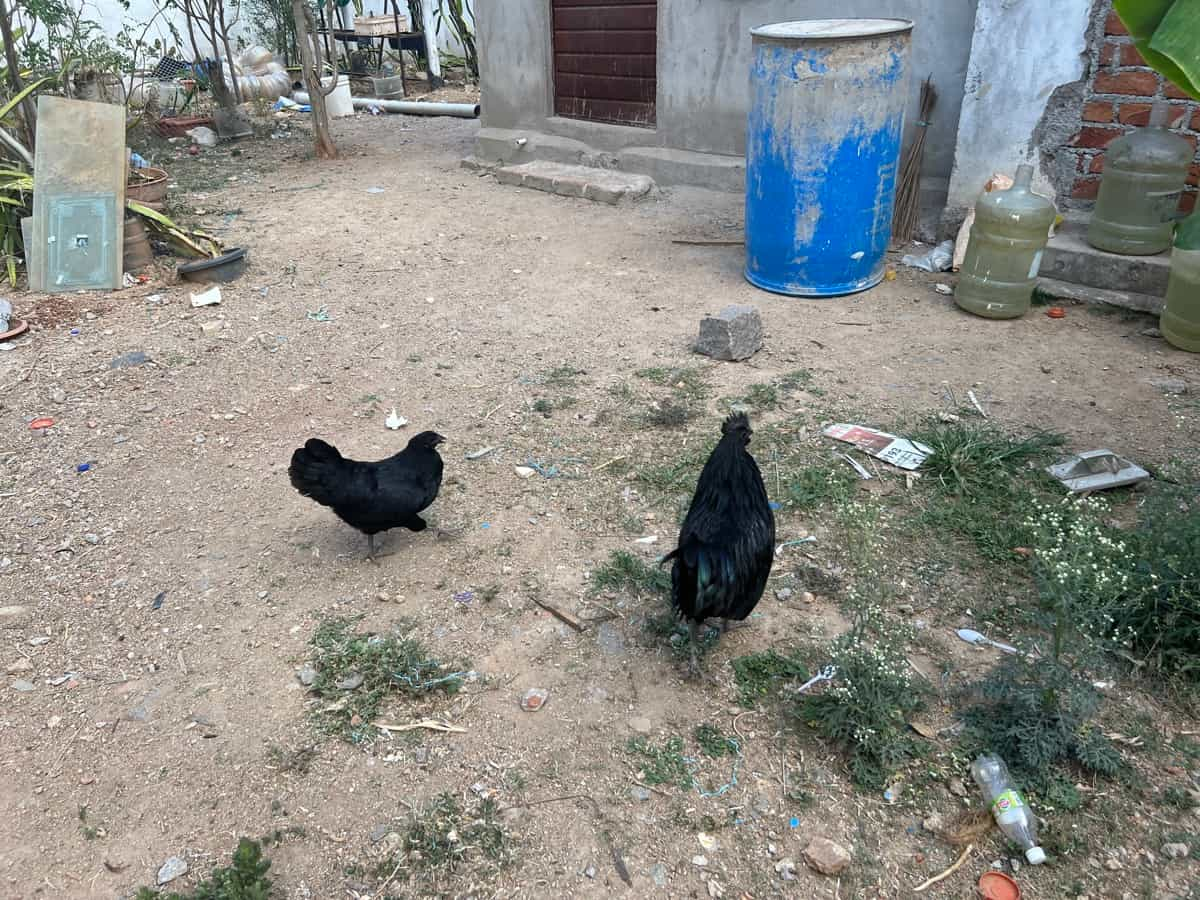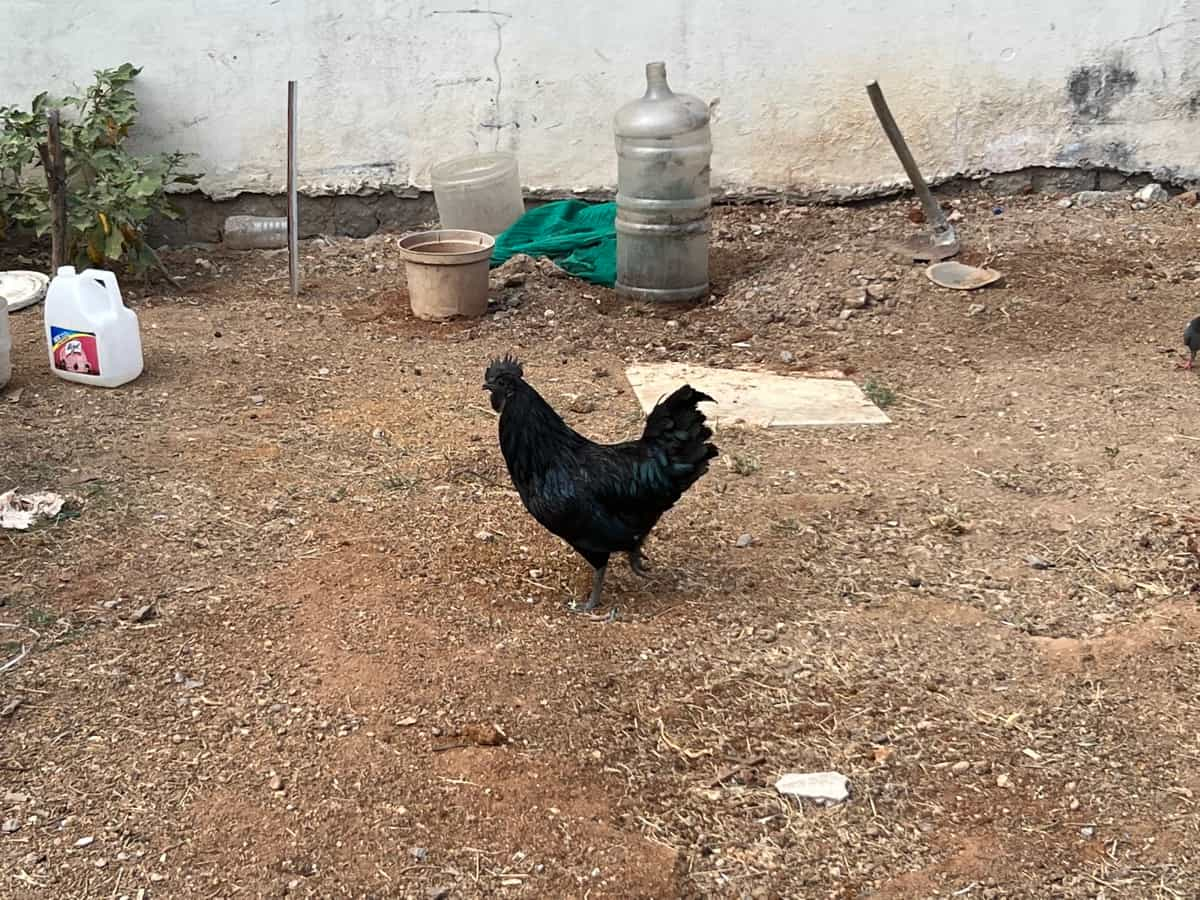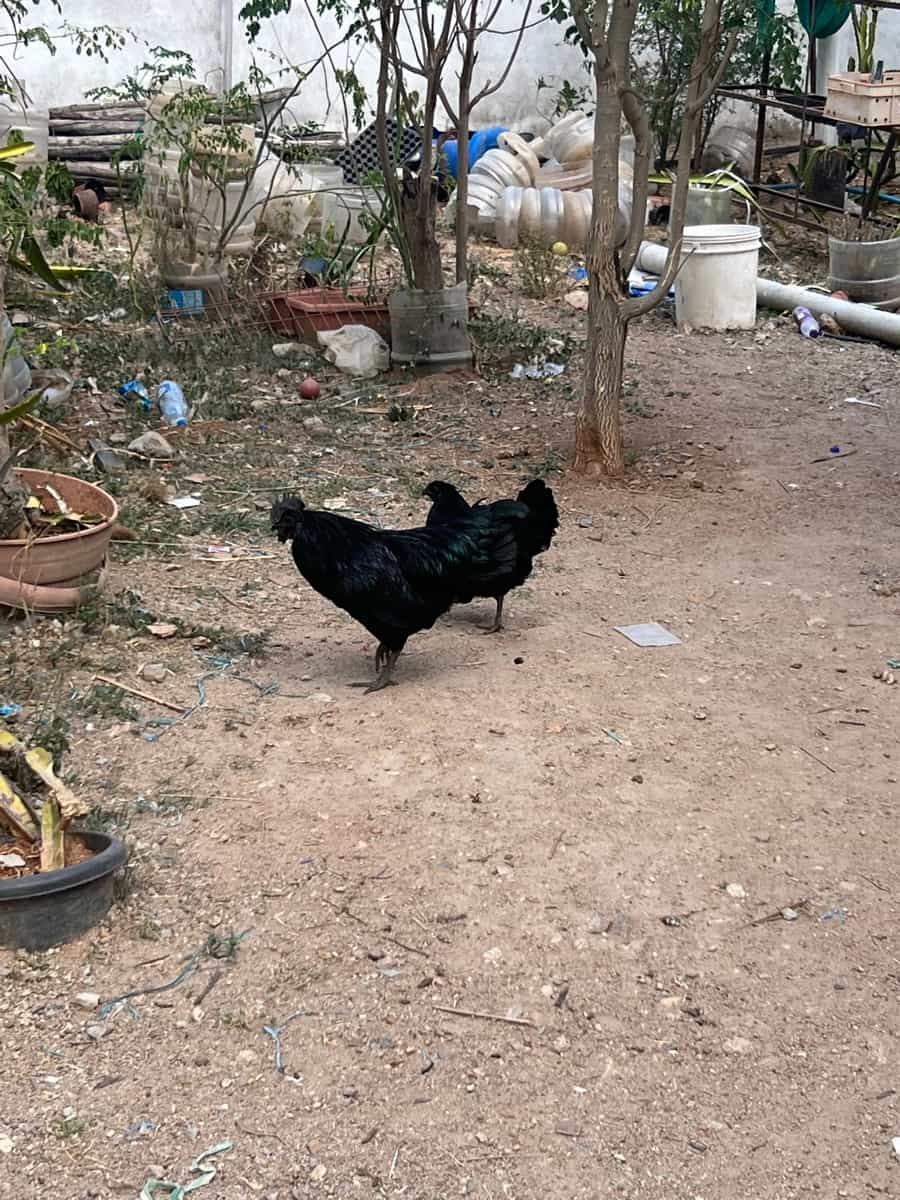Welcome to our comprehensive guide on Kadaknath chicken diseases. As the Indian poultry industry thrives, the unique Kadaknath breed’s popularity soars for its delicious meat and nutritional value. However, this success is challenging. This blog delves into the diseases affecting Kadaknath chickens, from subtle symptoms to severe infections. Discover effective control measures and treatments to safeguard your flock’s health and maximize your farming endeavors.

Introduction to Kadaknath Chicken Diseases: a Comprehensive Guide
The Indian poultry industry has grown remarkably, ranking India 7th in chicken meat and 3rd in egg production globally. The indigenous Kadaknath breed from Madhya Pradesh is renowned for its nutritious, flavorful meat and high demand, making it a lucrative venture for farmers. However, despite its resilience to local conditions, poultry farming faces challenges. Refrain from affecting environmental factors, mismanagement, and infectious diseases can jeopardize progress.
Intensive farming, due to global demand, intensifies disease risks. Some infections cause prolonged illness, while others, like avian influenza, result in sudden widespread mortality. Parasitic and mycoplasma infections may lead to chronic health issues, while inadequate poultry house management, such as contaminated resources and improper temperature control, exacerbates problems.
Common Infectious Diseases in Kadaknath Chickens: Symptoms and Treatment
- Newcastle Disease (ND)
- Symptoms: Sneezing, coughing, greenish diarrhea, reduced egg production.
- Treatment: Vaccination, supportive care with antibiotics.
- Infectious Bursal Disease (IBD)
- Symptoms: Watery droppings, huddling, decreased feed intake.
- Treatment: Vaccination, isolation, rehydration.
- Avian Influenza (AI)
- Symptoms: Sudden death, coughing, nasal discharge, drop in egg production.
- Treatment: Culling infected birds, strict biosecurity measures.
- Marek’s Disease
- Symptoms: Paralysis, weight loss, gray eye iris.
- Treatment: No cure, focus on prevention through vaccination.
- Coccidiosis
- Symptoms: Bloody diarrhea, weakness, decreased growth.
- Treatment: Anti-coccidial medications, clean environment.
- Fowl Cholera
- Symptoms: Swollen wattles, sudden death, ruffled feathers.
- Treatment: Antibiotics, sanitation, vaccination in some cases.
- Infectious Coryza
- Symptoms: Nasal discharge, sneezing, facial swelling.
- Treatment: Antibiotics, good ventilation, hygiene.
- Eimeria Infection
- Symptoms: Diarrhea, lethargy, dehydration.
- Treatment: Anti-coccidial drugs, improved hygiene.
Viral Diseases Affecting Kadaknath Chickens: Prevention and Control Measures
Viral diseases affecting Kadaknath chickens encompass several significant threats, including Newcastle Disease (ND), Avian Influenza (AI), Infectious Bronchitis (IB), Marek’s Disease, Fowl Pox, Infectious Laryngotracheitis (ILT), Gumboro Disease (IBD), and Egg Drop Syndrome (EDS). To safeguard these unique birds, prevention and control measures are essential. Vaccination plays a pivotal role, targeting specific viruses like ND and IBD. Adhering to strict biosecurity measures minimizes the risk of introducing and spreading viruses.
Isolation of infected birds, rapid reporting of outbreaks, culling, and disinfection are critical during disease incidents. Adequate ventilation and hygiene maintenance in poultry houses helps curb viral transmission. Regular monitoring, prompt diagnosis, and early intervention aid in controlling viral outbreaks. By implementing these strategies, the Kadaknath chicken population can be better protected against the detrimental effects of viral diseases.
In case you missed it: Colibacillosis Management In Chicken: Disease Symptoms, Treatment, Diagnosis, and Prevention

Bacterial Infections in Kadaknath Chickens: Diagnosis and Management Strategies
These infections can manifest as enteritis, respiratory issues, and more. To diagnose these infections, thorough clinical examination, bacterial isolation from affected tissues, and appropriate laboratory tests are crucial. Bacterial cultures and staining techniques aid in identifying the specific bacteria responsible. Effective management strategies involve maintaining stringent biosecurity measures to prevent transmission. Isolating infected birds, improving hygiene, and optimizing nutrition are vital steps.
Antibiotics may be prescribed, but responsible use is imperative to avoid antibiotic resistance. Vaccination against common bacterial pathogens, like E. coli, can bolster flock immunity. Proper housing, ventilation, and sanitation minimize stress, reducing infection susceptibility. Overall, a holistic approach encompassing preventive measures, timely diagnosis, and proper treatment under the guidance of a veterinarian is essential for mitigating bacterial infections in Kadaknath chickens.
Parasitic Diseases in Kadaknath Chickens: Identification and Control Methods
Parasitic diseases in Kadaknath chickens refer to infections caused by parasites that affect their health and productivity. These parasites can include internal worms, external mites, lice, and ticks. Identification involves recognizing symptoms like weight loss, decreased egg production, and feather loss. Additionally, microscopic examination of fecal samples can reveal the presence of worm eggs.
Control methods entail regular deworming using appropriate medications, maintaining clean and hygienic housing conditions, and implementing integrated pest management practices to control external parasites. Ensuring proper nutrition and reducing stress also aid in parasite prevention.
Fungal Infections in Kadaknath Chickens: Causes, Symptoms, and Treatment
Pathogenic fungi cause fungal infections in Kadaknath chickens and can lead to health issues. These infections typically arise due to poor hygiene, damp conditions, and overcrowded living spaces. Common fungi involved are Aspergillus spp. and Candida spp. Symptoms of fungal infections include respiratory distress, nasal discharge, decreased activity, and in severe cases, sudden death.
Infected birds might exhibit feather ruffling and reduced appetite. Effective treatment involves improving hygiene and ventilation to create a drier environment. Antifungal medications such as clotrimazole can be administered to affected birds. Regular coop cleaning, proper bedding, and maintaining a dry environment are essential preventive measures.
Respiratory Diseases in Kadaknath Chickens: Understanding the Impact and Prevention
Respiratory diseases in Kadaknath chickens encompass a range of conditions affecting the respiratory system, including the trachea, lungs, and air sacs. These diseases can lead to reduced productivity, increased mortality, and compromised overall flock health. Symptoms often include coughing, sneezing, nasal discharge, difficulty breathing, and reduced activity.
These issues impact the birds’ welfare and have economic implications for poultry farmers. Prevention of respiratory diseases involves stringent biosecurity measures, proper ventilation, and optimal environmental conditions. Quarantining birds before introducing them to the flock, avoiding overcrowding, and maintaining clean and dry litter are crucial practices. Regular cleaning and disinfection of poultry houses, providing a balanced diet, and minimizing stress contribute to respiratory health.
Gastrointestinal Disorders in Kadaknath Chickens: Causes, Symptoms, and Remedies
Gastrointestinal disorders in Kadaknath chickens encompass a range of digestive system-related issues that can impact their health. Causes often include inadequate hygiene, contaminated feed or water, and parasitic infections. Symptoms may involve diarrhea, reduced appetite, weight loss, and dehydration.
Worm infestations, coccidiosis, and enteritis are common contributors to disorders. Proper remedies are essential to mitigate these concerns. Maintaining clean environments, providing uncontaminated feed and water, and implementing regular deworming schedules are key preventive measures. Prompt veterinary attention and administration of appropriate medications can effectively treat these disorders.
Musculoskeletal Problems in Kadaknath Chickens: Diagnosis and Treatment Approaches
Musculoskeletal problems in Kadaknath chickens encompass a range of issues affecting their bones, joints, and muscles. These problems can lead to discomfort, immobility, and reduced productivity. Diagnosis involves careful observation of symptoms like lameness, difficulty in movement, abnormal posture, and joint swelling. X-rays and physical examination aid in accurate identification. Treatment involves addressing underlying causes such as nutritional deficiencies, poor management practices, or genetic factors.
In case you missed it: Infectious Bronchitis Management In Chicken: Disease Symptoms, Treatment, Diagnosis, and Prevention

Nutritional adjustments, including balanced calcium and phosphorus intake, are crucial. Providing comfortable housing with proper flooring and space can prevent problems. Supportive care, including physical therapy and medication for pain and inflammation, plays a pivotal role. Preventive measures such as maintaining appropriate litter conditions and ensuring access to clean water are key. Timely intervention, improved housing, and optimal nutrition can alleviate and prevent musculoskeletal issues.
Reproductive Disorders in Kadaknath Chickens: Challenges and Solutions
Challenges may include low fertility rates, poor hatchability, and irregular egg production. Causes can range from genetics and age-related factors to inadequate nutrition and stress. Solutions involve improving breeding selection, optimizing nutrition, ensuring proper lighting and environmental conditions, and implementing sound management practices.
Conclusion
Understanding and managing diseases in Kadaknath chickens is pivotal for successful poultry farming. Vigilant monitoring, effective vaccination, and robust biosecurity practices are crucial to ensuring the health and prosperity of these unique birds.
- Beneficial Insects in Pest Management
- Natural Solutions for Pest Control in Flower Gardens
- Types of Fungicides Used in Agriculture
- Common Issues in the Fruit Development Stage of Pomegranate Farming
- Fruit Development Issues in Papaya: Easy Solutions and Treatment
- Soil-Borne Diseases and How to Protect Your Plants
- Practices to Prevent Disease Spread in the Garden
- From Wilted to Thriving: How to Treat Root Rot Naturally in Houseplants
- Natural Remedies to Cure Brown Spots on Fig Tree Leaves